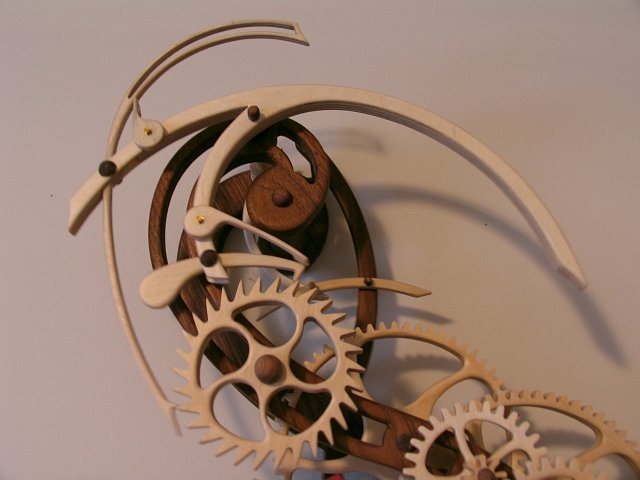| This clock uses the grasshopper escapement for control. The escapement is right at the top with the arms that go up and down. It is this part of the clock that produces the tick tock. In this latest clock there is more movement than usual and the articulated arms can be of several designs, some of which look like the back legs of a grasshopper. The grasshopper movement was developed by John Harrison in the early 1700s. Harrison, the father of clock movements, solved the longitude problem in seagoing navigation by designing a clock that would tell time on a ship. The grasshopper escapement was used on two of the four clocks he built which ultimately led to the resolution of the problem and the collection, by Harrison, of 20,000 pounds awarded by the British Admiralty. This type of escapement is very well-suited to wooden clocks because there is virtually no friction, a major issue in building clock movements from wood. |



